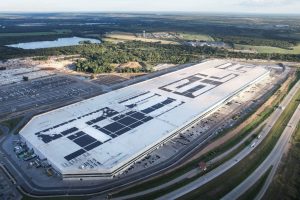- 🚫 The National Highway Traffic Safety Administration (NHTSA) has closed its second investigation into Tesla vehicles in a week.
- 📷 This latest investigation aimed to find the cause of a touchscreen failure that resulted in the loss of the rear camera image display when the car was in reverse gear.
- 🔍 The NHTSA probed this issue in 158,716 Tesla vehicles.
- 💻 The problem was caused by a memory chip in Tesla’s vehicles that had a limited lifespan of around 3,000 Program-Erase cycles, or approximately 5-6 years.
- 📝 Tesla issued a recall in January 2021 and provided a free hardware update and an Over-the-Air (OTA) software update to address the issue.
- ✅ The NHTSA concluded that Tesla’s hardware and software updates appear to address the unreasonable risk to motor safety, prompting the closure of the investigation.
- ⏪ Last week, the NHTSA also closed an investigation into Tesla’s Autopilot system after the company implemented several improvements through a recall and OTA update.
Tesla, the pioneering electric vehicle manufacturer, has once again demonstrated its commitment to safety and transparency by successfully resolving two investigations conducted by the National Highway Traffic Safety Administration (NHTSA). In a span of just one week, the NHTSA has closed two separate probes into Tesla’s vehicles, marking a significant milestone for the company and its unwavering dedication to addressing potential safety issues.
The Touchscreen Failure Investigation
The first investigation, which began in November 2020, focused on a touchscreen failure that resulted in the loss of the rear camera image display when the vehicle was in reverse gear. This issue affected 158,716 Tesla vehicles and raised concerns about reduced rear visibility during backing maneuvers, as well as potential impacts on HVAC (defogging) functionality and audible chimes related to driver assistance systems and turn signals.
Root Cause and Tesla’s Response
After thorough investigation, the NHTSA determined that the root cause of the touchscreen failure was a memory chip used in Tesla’s vehicles. This chip had a limited lifespan of approximately 3,000 Program-Erase cycles, which translates to around 5-6 years of usage before becoming non-operational.
Recognizing the potential risks, Tesla took proactive measures by issuing a recall in January 2021. The company provided affected owners with a free hardware update and an Over-the-Air (OTA) software update to address the issue. These updates effectively mitigated the risk of touchscreen failure and restored the proper functioning of the rear camera display and other affected systems.
The Autopilot Investigation
The second investigation, which concluded just a week prior, focused on Tesla’s Autopilot system. This probe examined the potential safety implications of the driver assistance feature and its interaction with the vehicle’s occupants.
In response to the NHTSA’s concerns, Tesla implemented a comprehensive recall in December to enhance the Autopilot system’s safety features. This recall included:
- Increasing the prominence of visual alerts on the user interface.
- Simplifying the engagement and disengagement process for Autosteer.
- Implementing additional checks when engaging Autosteer outside of controlled access highways or when approaching traffic controls.
- Other improvements to ensure safer operation of the Autopilot system.
The NHTSA conducted a Recall Query to evaluate the effectiveness of Tesla’s OTA update and found it to be satisfactory in providing additional safeguards during Autopilot usage.
Tesla’s Commitment to Safety and Continuous Improvement
The closure of these two investigations by the NHTSA highlights Tesla’s unwavering commitment to addressing potential safety concerns and maintaining transparency with regulatory authorities and customers alike. By proactively issuing recalls, providing hardware and software updates, and implementing comprehensive improvements, Tesla has demonstrated its ability to quickly respond to identified issues and prioritize the safety of its vehicles and occupants.
Moreover, Tesla’s reliance on Over-the-Air (OTA) software updates has proven to be a game-changer in the automotive industry. This innovative approach allows the company to swiftly address and resolve issues without the need for time-consuming and costly recalls that require physical visits to service centers.
As Tesla continues to push the boundaries of electric vehicle technology and autonomous driving systems, it is clear that safety will remain at the forefront of their efforts. By collaborating with regulatory bodies and maintaining an open dialogue with customers, Tesla is paving the way for a future where innovation and safety go hand in hand.





